How the All-Packa and Packalope bars came to be
by Willie Hatfield
The origination of the All-Packa
In 2020 I started a program of research and development (AKA tinkering) with the high aim of creating the ultimate bikerafting bike. The code name was Tardigrade AKA Water Bear.
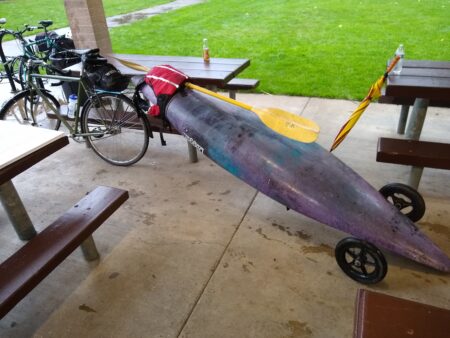
Bikerafting is a little niche I know, but I’ve spent years of my life on the water, and over a decade car-free so I’m personally motivated to make watercraft and bicycles play well together. Once you strap a packraft to your bike, you’ll never pull a kayak or canoe behind your bike again!
Shout out to a then recent hire, Chris, who was a fellow bikepacker and packrafter and helped get the project started before moving on in the tumult of the Pandemic. My first prototype was formed from a late-night brainstorm with him. We talked about how nice having an internally geared hub and belt drive would be on the raft, not to mention the compactness of small wheels and a fold, but there was no Bike Friday that would work for that. The NWT Silk was closest but they were not designed for really rough terrain.
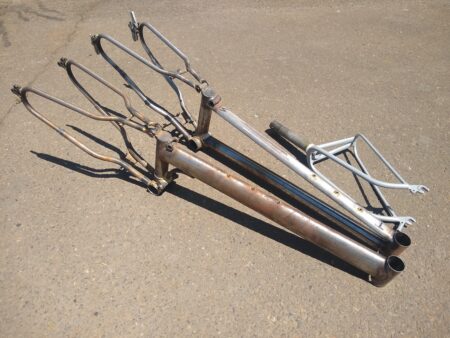
I’m proud to say that every rusty prototype frame was filled with concepts that were tested thoroughly. I’d frequently cut out and reweld new parts on. And for some concepts, like my dream of a new fold that worked for all drivetrains, nothing I tried was as strong, lightweight and reliable as our current fold. So, there is no belt-drive compatible All-Packa. Yet. That fold is the Windmill to my Don Quixote!
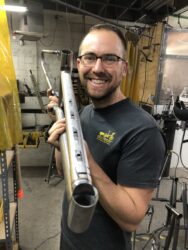
Along the way, I realized I needed to think much bigger than bikerafting. There wasn’t yet a bikepacking bike that was convenient for travel! Period!

I also experimented a lot with frame geometry to work within the constraints of a folding bike to improve handling on rough terrain. I tested head tube angles from 69-73 degrees and seat tube angles from 71-78 degrees. I wanted to achieve the excellent handling of 29er bikepacking bikes but I found a few issues. Modern mountain bikes have very different head and seat tube angles from each other. For frame design, this means that the top tube length is dependent on the height of the head tube (AKA fork length). The head tube is much lower on a Bike Friday than a 29er to achieve the other functions of folding and packing into a suitcase. This large difference in head tube locations means that trying to match rider position and angles makes it impossible to have the Bike Friday fit a taller person. To fit a 6 ft person with 29er angles on a Bike Friday frame would require a 90cm top tube! That would not fit into a suitcase!
In the end I am using a more gravel oriented geometry and have kept the head and seat tube parallel at 72.5 degrees. For improved all terrain handling I also get the front wheel forward and achieve a longer front-center and wheelbase by using a 35mm stem and specifying swept back bars. Using a zero-setback seatpost steepens the seat tube angle slightly so the rear wheel will grip better while climbing. I’ve rewritten the sizing algorithm that we use internally to ensure we can apply this new geometry when we are matching the fit of our customer’s other bikes. In practice, riders from 4’6″ to 5’10 will get an All-Packa with pretty remarkable off-road handling. Above 5’10” the frame will max out at 62cm and the handling will be more like a New World Tourist or Diamond Llama because the wheelbase can’t lengthen further.
Another important geometry change I’ve made is to lower the bottom bracket by 1/2 inch. This is partially because the typical tires for this bike are so large, but mostly because I am prioritizing a lower center of gravity that makes the bike handle better loaded, over ground clearance over technical terrain. If you are riding gnarly rocks, ruts, and roots, I want you to slow down and watch for pedal-strike slightly more than on a typical mountain bike. This keeps the riding safe and fun.
I tried front suspension but found that for 20 inch wheels, front suspension comes in only 2 varieties. One is low quality stuff that only makes riding more difficult. The other type is built for kid’s mountain bike racing which have low weight limits. So nothing currently fit my quality or utility standards.
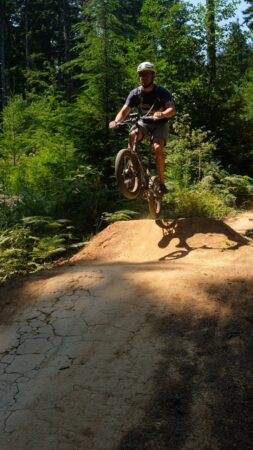
Tires and braze-ons make or break this bike. Braze-ons add bikepacking gear compatibility and flexability for the User. Wide, high-volume tires, run at low pressures are what transform the capability of this bike. From comparing 29ers and 20 inch bikes on the same trails I think you need 1/2 inch more width on the 20 inch wheel to get the same comfort and confidence over the same terrain. So as a Rule of Thumb, a 20″ x 2.4″ (406x61mm) is roughly equivalent to the ride of a 29″ x 1.95″ (700c x 49mm). Rollover is slightly better on the 29er but traction is slightly better on the 20 inch. There are a large number of excellent tires between 2.1 and 2.4 inches available so I am declaring this tire size the current sweet spot for bikepacking on 20 inch tires. I will revisit frame clearances if the tire supply changes.
Even with the compromises from my original vision I believe the bike that has become the All-Packa is an excellent bikerafting bike, but it is also so much more. Along the way I realized there was no bikepacking bike that was good at travelling. This realization shifted my design focus away from the niche of a niche that is bikerafting, to the much larger realm of travel by bike.
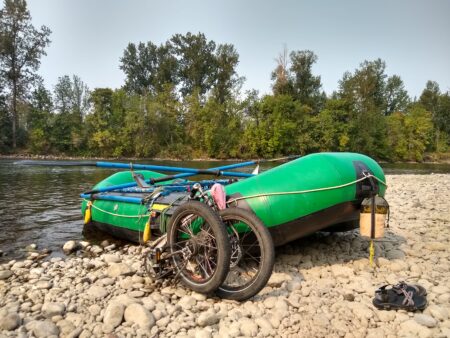
Creating the Packalope Bar
We’ve been making our own handlebars since 1992 so we thought we could contribute something to the mix of Alt Bars from Surly, Velo Orange, Crust, Jones, Koga and others. Like those other bars, the Packalope bar is wide for good control of a loaded bike over rough terrain, and has multiple hand positions for all day comfort. But unlike those bars, the Packalope splits for easy packing into a suitcase. Plus, the Packalope bar features flattened areas for increased comfort, and at 380grams, is half the weight of many other Alt Bars.
- Clamp: 31.8
- Width: 730mm (suitable for all sizes of riders and plenty for the balanced steering of the All-Packa)
- Sweep: 17 degrees
- Extensions: 350mm c-c
What is the All-Packa? (Besides a cousin to Llamas!)
Folks ride the Bike Friday pakiT across continents and ride Bromptons more than 10 miles so obviously almost any bike can do almost anything if you’ve got the notion. But it sure is handy to have the right bike for the job.
To me, the All-Packa is a bikepacking bike. And a travel bike. And a bike that fits smaller riders better than any other travel or bikepacking bike. I’m 6’2″ and spend all day in the factory building bikes. If you are smaller than me and have the time to explore our beautiful world away from the pavement, then this is the best bike you could buy. Having a bike that can handle a wider variety of surfaces gives you more options. Whether going around the local park, heading out of town down a farm road, or venturing to the farthest reaches of the earth, this is the bike for you.
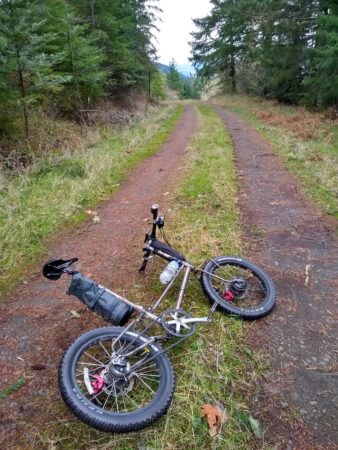
We live in an interconnected world, and our transportation network is varied and sometimes challenging to navigate. The All-Packa allows more flexibility and ease in how you create your adventures. I’ve endeavored to design a bike that makes both the journey to the ride, and the ride itself, more accessible to more people. One benefit is how you can more easily choose to integrate less impactful forms of transportation like buses, trains, and ride-share into your cycling. And every Bike Friday owner knows how well our bikes work as conversation starters! Go be a part of the global community of bikepackers, reconnecting with the world and each other.
More about me and how I see Bikepacking
If you are new to bikepacking, leave this article and go immerse yourself in the wonder that is Bikepacking.com. Their Bikepacking 101 guide is excellent. Back? Good, now that you’re fired up by that heady mixture of adventure photography, philosophical musings, and dirty bikes, lets get into it.

For me, I don’t define bike touring and bikepacking by the gear or even the terrain. I think of their similarities and differences culturally. Folks have been traveling by bicycle since the days of Thomas Stevens. I trace modern bike touring’s cultural roots through the 1976 Bikecentennial event. This amazing parade of 10 speed road bikes set the cultural tone for the past 50 years of bike touring.
But since the 80s, mountain biking has developed its own distinct culture and language. When I hear a modern mountain biker talking about going full send, hucking drops, and shredding the Gnar-Gnar, my eyes go a bit cross-eyed. But it also gets my stoke high, since these crazy mountain bikers, along with the parallel development of ultralight backpacking gear, have managed to reinvent bicycle travel once again: Bikepacking
Now bikepacking culture is spreading far and wide, well beyond your local trail network. A watershed moment to me was seeing Lachlan Morton’s Alt Tour De France in 2021 described as bikepacking. Bikepacking has reached the heart of road cycling culture and there’s so much possibility within this ongoing cycling cultural exchange.

I was first introduced to the ethos of bikepacking in 2006 by the Ray Jardine book “Beyond Backpacking”. Ray’s out of the box approach to gear, skills, and moving lightly through the world was a game-changer to a young Eagle Scout like me. Tucked in that book were a few short pages about his experiments in applying his ultralight backpacking theories to bike touring.
That was the moment in my mind that I stopped “touring” and started “bikepacking.” I was still using racks because the bag types we see nowadays hadn’t been invented, but I was done with listening to bike touring orthodoxy! Forget panniers – an ultralight backpack and a bear cannister worked for me for 16,000 miles over several years. Maybe I was a touch contrarian, but I was excited by the possibilities of approaching an old challenge like bicycle travel in new ways. That excitement, and an idealistic streak a mile wide, led me to Bike Friday in 2012.
Here is our first video showing the All-Packa features:

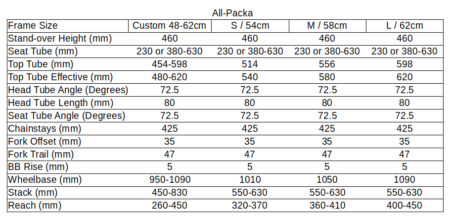

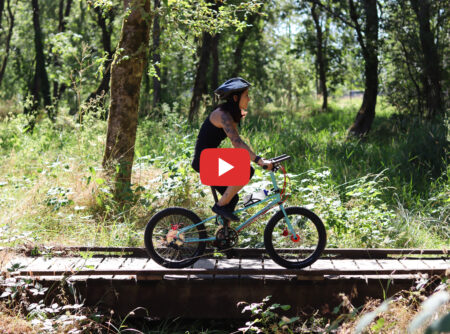



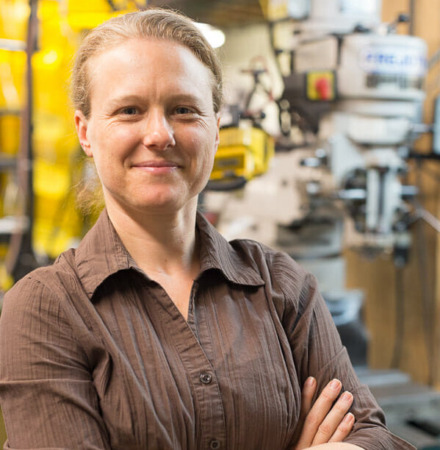
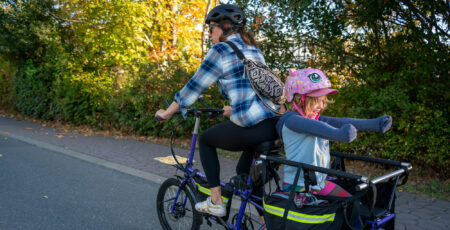
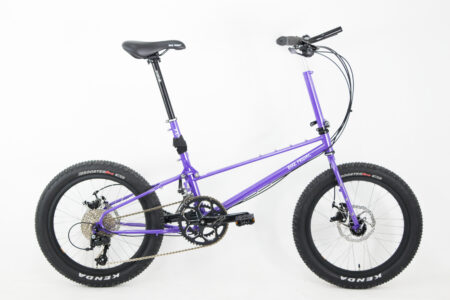
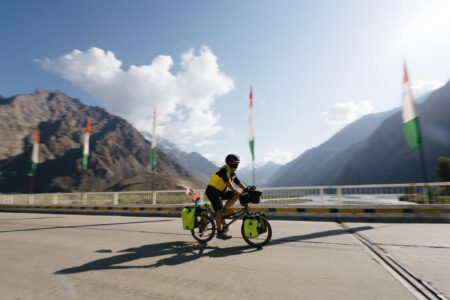
16 Responses
Hell of an article Willie. Kudos.
Great article Willie, love the creativity. Looks like a great bike. Especially the handlebars and frame. Gotta love Bike Friday for staying the path or following their mission. Good job 👏.
Thanks for the info and kudos for keeping the innovation going in Bike Friday!
On the picture above I see the All-Packa with some Internal Gear Hub, can’t make out which one. IGH are perfect bikepacking alternative for those who don’t mind the extra weight (and are willing to shed the extra cash).
Are you planning to offer the bike with Alfine is the frame capable of installing the Rohloff hubs?
Job well done!
Hi Nick, we limit the options we show on the website to keep the presentation from being overwhelming. So IGH like Alfine and Rohloff are available if you get in contact with us via phone or email so we can work with you on creating your bike!
I think this bike was designed for me. LOL! Any chance of leading a short bike excursion for us pre existing Bike Friday owners and those who want to try this bike before we buy?
Karen, are you suggesting we visit you or you visit us?
Both! I would be happy to host a mid Atlantic showing. Please schedule a factory tour and bike excursion. I want to be the first to sign up!
Karen, are you suggesting you want to come visit? If so, please do! However, I will tell you that the All-Packa will ride very similar to your existing Bike Friday.
Both! I would be happy to host a mid Atlantic showing. Please schedule a factory tour and bike excursion. I want to be the first to sign up!
Karen, we have no plans currently of doing any sort of showing. However, we’d be happy to have you at the factory. Drop us an email and let’s get it scheduled!
Hi Willie! Great post, and wow, what a fantastic bike. You used the igh with a belt drive on one of your prototypes, is there any chance to run Gates belt on the final version? Can the chainstay be splitted?
Answering for Willie here, but long story short, no. There is a very remote possibility that some future version might, but despite trying very hard to build that in from the beginning, it proved to be a severe design challenge given all the other requirements for the bike.
Colour me curious. This is an intriguing bike. Looking for something that folds up to take on a sail boat.
Could one substitute a rear hub gearbox? something like the Shimano Alfine 11-Speed SG-S7001-11? Just something less to get smashed on those tiny wheels.. (I normally ride a Cotic Solaris Max 29″ wheels)
Yes, internally geared hubs are an option. Much of my prototype testing was done with an Alfine 11spd hub. A chain tensioner is still needed because of the fold, but the tensioner cage is shorter than those of many derailleurs so there is still some ground clearance gained. -Willie
Hi Willie. I am 6’3. Are you saying this is not the bike for me?
Hi Paul, our bikes are custom sized, so just your height is not enough to say if we can match the sizing on your current bikes. We probably can, but what I’m trying to get across in this article is that most bike designs are optimized for tall folks like us, but are then said to work well for shorter people. The All-Packa is different. It is optimized for folks under 6′, but can work well for taller folks like us. At 6’3″ you will not get the same proportionally long wheelbase as a smaller person, but you will still get the longest, most stable travel bikepacking bike in existence.